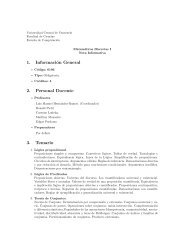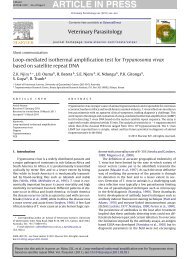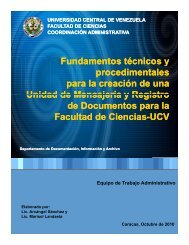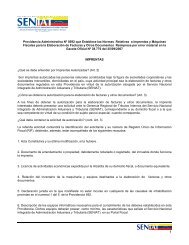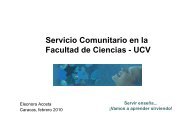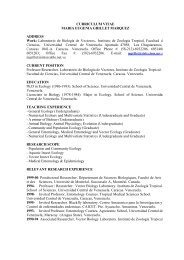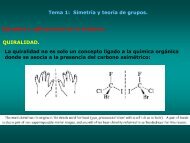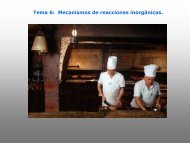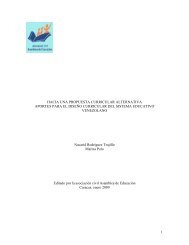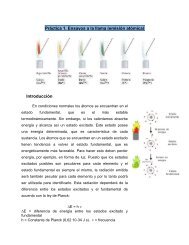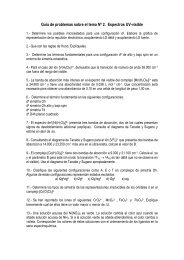Collecting and Preserving
Collecting and Preserving
Collecting and Preserving
- No tags were found...
You also want an ePaper? Increase the reach of your titles
YUMPU automatically turns print PDFs into web optimized ePapers that Google loves.
e made from specimens taken directly from 80 percentethanol <strong>and</strong> from specimens immersed in 95 percentethanol for only a minute.The medium is water-white, remains so indefinitely,<strong>and</strong> for remounting, in case of breakage, specimens maybe removed by soaking in absolute ethanol. Euparal has avery decided advantage over other media in that small airbubbles trapped in slide preparations are absorbed by themedium during drying, although this sometimes requiresseveral days. Its only disadvantage is that it shrinksconsiderably in drying. In moderately thick preparations,this results in shrinkage away from the edges of the coverslip. This may be countered by adding additional Euparaluntil there is no further shrinkage, or in many instances byusing a large cover slip, 2.2 cm in diameter, which indrying will pull down around the edges instead of allowingthe medium to draw inward. The medium is relatively fastdrying.Allowing the slide to remain overnight in an ovenset at about 35° C or in the open at room temperature for afew days will yield usable <strong>and</strong> permanent preparations.Hoyer’s medium <strong>and</strong> polyvinyl alcohol (PVA) areaqueous mounting media. Slides made with them areconsidered only semipermanent, although in the U.S.National Collection of Insects at the Smithsonian Institution,some 40-year-old slides of mites mounted in Hoyer’smedium are still in good condition. Nevertheless, manyother slides show significant deterioration after only a fewyears, even when ringed. Slide preparations made withHoyer’s or PVA, particularly of large or thick specimens,tend to crystallize with age <strong>and</strong> may need remounting.Some specimens may be destroyed completely.To remount specimens, soak the slide in water untilthe cover glass can be removed, then lift the specimencarefully <strong>and</strong> transfer it to a new slide. Some techniciansfind slides easier to prepare if the Hoyer’s medium isdiluted with water; however, in the process the mountsmay collapse as the excess water evaporates. It is stronglyrecommended that Hoyer’s medium be prepared exactly asdirected (see Appendix) <strong>and</strong> used undiluted. However, itshould be noted that one of the primary ingredients(chloral hydrate) of Hoyer's is now listed as a controlledsubstance by the government so that it is impossible to buywithout a permit.Aqueous media are affected by ambient moisture;mounts made in very humid conditions may not drysatisfactorily. Nevertheless, Hoyer’s is preferred by mostacarologists because its refractive index is excellent foruse with mites, <strong>and</strong> specimens can be mounted directlyfrom the collecting fluid without clearing or fixing. Thespecimens are cleared after mounting by heating the slidesbriefly on a hotplate set at 65° C until the medium barelybegins to bubble. Do not allow Hoyer’s medium to boil orthe specimens may be ruined. Such mounts can be<strong>Collecting</strong> <strong>and</strong> <strong>Preserving</strong> Insects <strong>and</strong> Mitesprepared quickly for immediate study but should be placedin an oven for curing (See item (7).(5) To place specimens in the medium, put one ormore drops of the medium in the center of a 2.5- by 7.5-cm clean glass slide. The precise amount of medium to usewill require some experience. Enough is needed to rununder the entire cover glass. When Euparal is used, a littlemore is required than with some other media because ofshrinkage, but an excess of any medium around the edgeof the cover slip is undesirable.Place the cleared <strong>and</strong> washed (also stained orbleached if necessary) specimen in the medium on theslide <strong>and</strong> make sure that it is well immersed <strong>and</strong> that airbubbles are absent. Arrange it in the desired position witha fine needle. If the specimen is thick, place at least threepieces of broken cover glass or plastic props around it toprevent undue crushing when the cover slip is applied.With some preparations, as for example with ovipositorsof tephritid flies, a considerable amount of pressure duringdrying is desirable to obtain maximally flattened <strong>and</strong>comparable preparations. Then gently lower a cover sliponto the specimen with forceps, holding the cover slip at aslight angle so that it touches the medium first at one sideto prevent air entrapment as much as possible. A smallamount of thinning agent on the under surface of the coverslip may help avoud trapped air bubbles. Apply gentlepressure with the forceps to fix the position of the specimen.It is often advisable to prepare specimens in morethan one position, for example, dorsal side up as well asdorsal side down, but do not mount parts of more than oneindividual specimen on one slide, because all individualsin the series may not be taxonomically identical.(6) Ringing. Special compounds are available toapply in a circle around the edge of the cover glass <strong>and</strong> theadjacent area of the slide to seal the medium (fig. 31). Thisis advisable with aqueous <strong>and</strong> other median that do notharden as they dry. It is not necessary to ring Canadabalsam or Euparal mounts.(7) Curing. Allow slides to dry or set completelybefore h<strong>and</strong>ling or placing them in other than a horizontalposition. Until dry, avoid storing them in a slide box,mailing them, or allowing other persons to use them. If anoven or slide warmer is available, set it at about 45° C.The amount of time it takes to dry a slide is variabledepending on the medium, size of the specimen, <strong>and</strong> otherfactors such as humidity. It may take from a couple daysfor small specimens in aqueous media up to several weeksfor larger balsam mounts before a slide is dry enough toship or store on edge. One way to check progess is by verylightly pressing on the center of the coverslip <strong>and</strong> watching42



